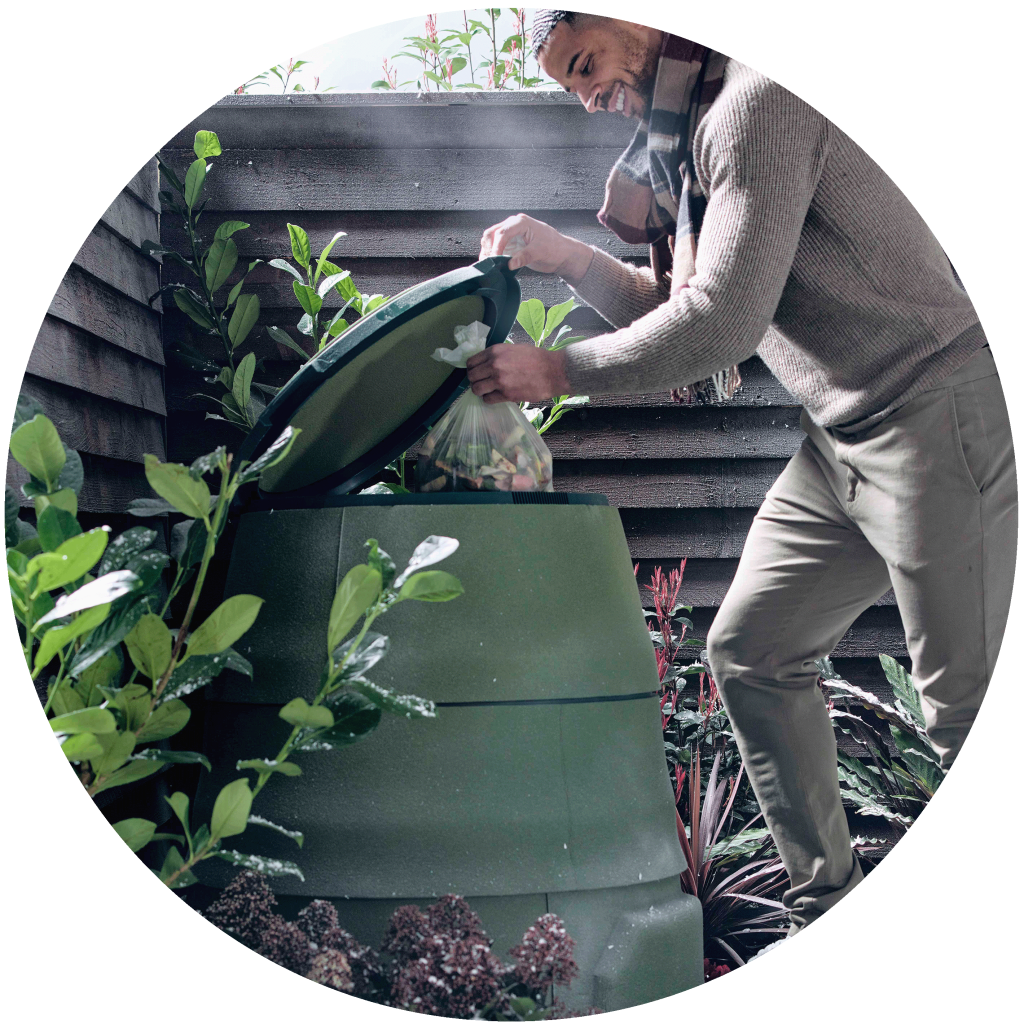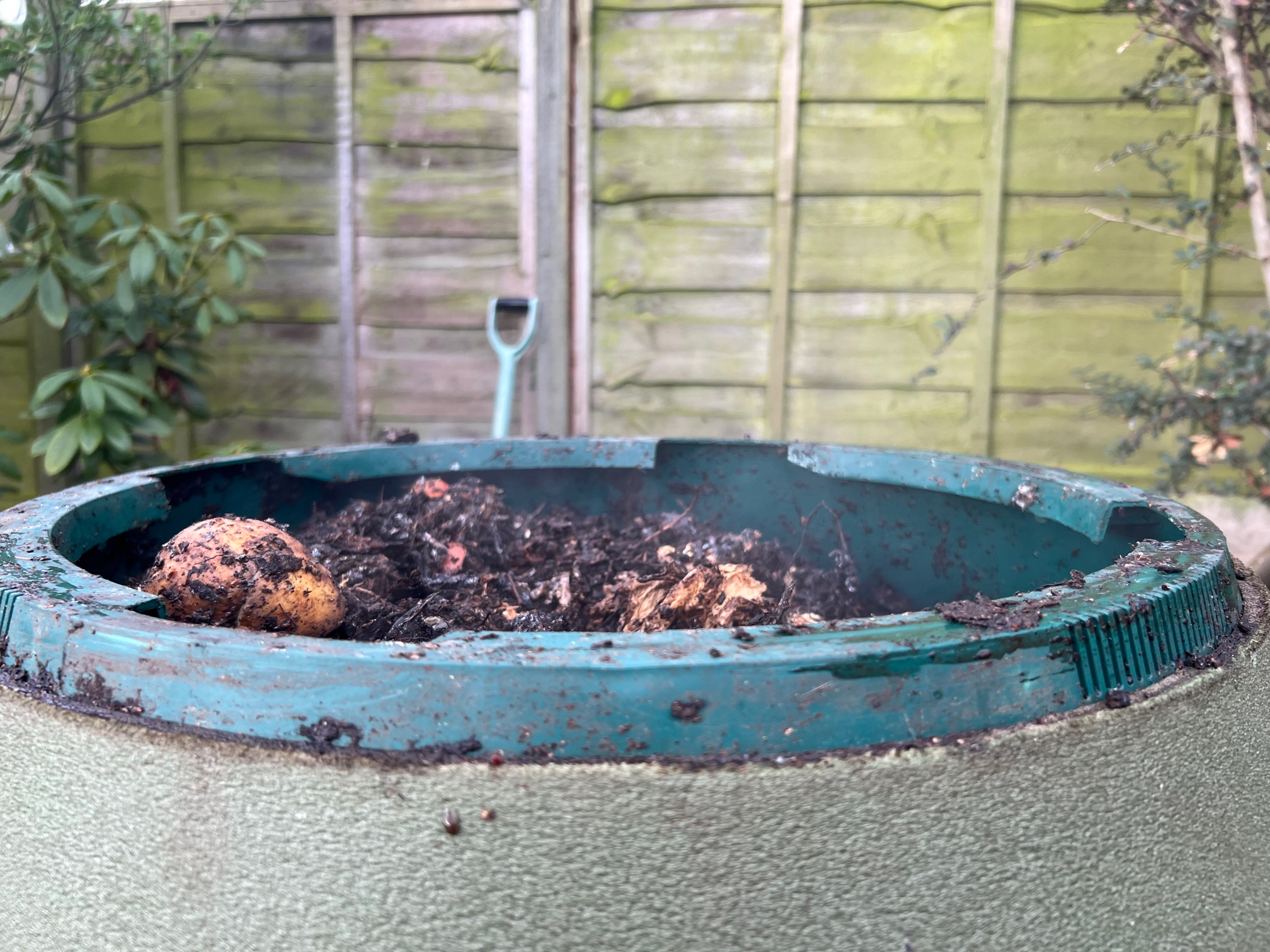Using the Green Johanna in its classic specification is a great way to turn your food and garden waste into soil-enriching, high quality compost.
Independent studies (Which?/Gardeners’ World magazine) praise the Johanna for its ability to take a wider range of inputs than most regular composters and for the temperatures it is able to reach. This is largely due to its ventilation system, with a patented base that allows air inflow past the mass of compost already in the composter and a twist lid that allows the upper vents to be opened or closed depending on conditions. Heat is retained in the composter due to its enclosed design (most garden composters feature an open or loose-fitting base) and wall thickness (at 10kg, the Johanna weighs in at 2-3 times the weight of many other composters).
According to the Which? trial, the Green Johanna outperformed all but one composter on the market in terms of compost temperature, with temperatures into the 40 degree Celsius range. This form of composting is largely traditional, relying on worms and insects to finish the job that the heat-generating microbal activity has got underway.
Using this method, the use of an Insulating Jacket has usually been advised when temperatures drop below 5 degrees Celsius in the winter months. This is because microbal activity ceases at these temperatures, meaning compost temperatures decrease and the compost pile may stall until it is heated up again.
Trials
Throughout last year, however, the team at GGS wondered what would happen if we took a different approach and left the Insulating Jacket on all year. We had received positive feedback from a number of customers who had done just that, and so we undertook a number of individual trials. The results were dramatic. Our main finding was that leaving the jacket on raised compost temperatures into the 30 to 60 degree Celsius range on a permanent basis, even in the coldest winter periods. The insulated Johanna has proven to be the perfect vessel for domestic thermophilic composting, which is microbial in nature, accepts a wider range of waste and makes for much faster composting.
Here are our quick tips for getting started:
- Insulating Jacket. Add it to the Green Johanna and leave it on. If you are retro-fitting to an existing Johanna you should see a significant increase in compost temperature within days.
- Carbon. By which we mean autumn leaves, shredded paper, cardboard, twigs, branches and mulch. The latter can be bought from your local DIY store. Add these carbon-rich materials generously, no less than in equal amounts to the amount of nitrogen-rich materials (green garden waste, food waste) you have added. Mix well after adding new inputs.
- Aeration. This form of composting requires more effort than classic composting. Use your Green Johanna aerator stick regularly as normal, but also aerate deeper into the pile on a weekly basis with a garden fork.
- Bokashi. Adding half a bag or a full 1kg bag of Bokashi bran monthly raises composting temperatures in the short term and accelerates the composting process. For those who want to try using a Bokashi bin; adding food waste to the Johanna that has been allowed to ferment for two to three weeks in a Bokashi bin will dramatically increase compost temperature and accelerate the process. Be sure to add plenty of carbon and a bag of Bokashi Bran at the same time as the pre-compost mixture that has fermented in the Bokashi bin.
- Chop your waste into small pieces to increase surface area and optimise the process. This will also make turning the compost much easier. Use a chipper-shredder for your garden waste if you have one; these can also be hired on a daily basis.
- Take the compost temperature. Compost thermometers are widely available at garden centres and online. Place the thermometer inside the composter and check temperatures regularly. The microbal processes die off when compost temperatures reach 72 degrees Celsius – this is the opposite problem to the traditional low temperature issue in winter, with the same outcome of a stalled compost heap. If temperatures near this threshold – and we have seen this several times during the trials – remove the jacket to allow the contents to cool down before adding the jacket again.
This approach is for the more committed or interested composter, but for those looking to compost all of their organic waste quickly and efficiently it is a project well worth embarking on.



